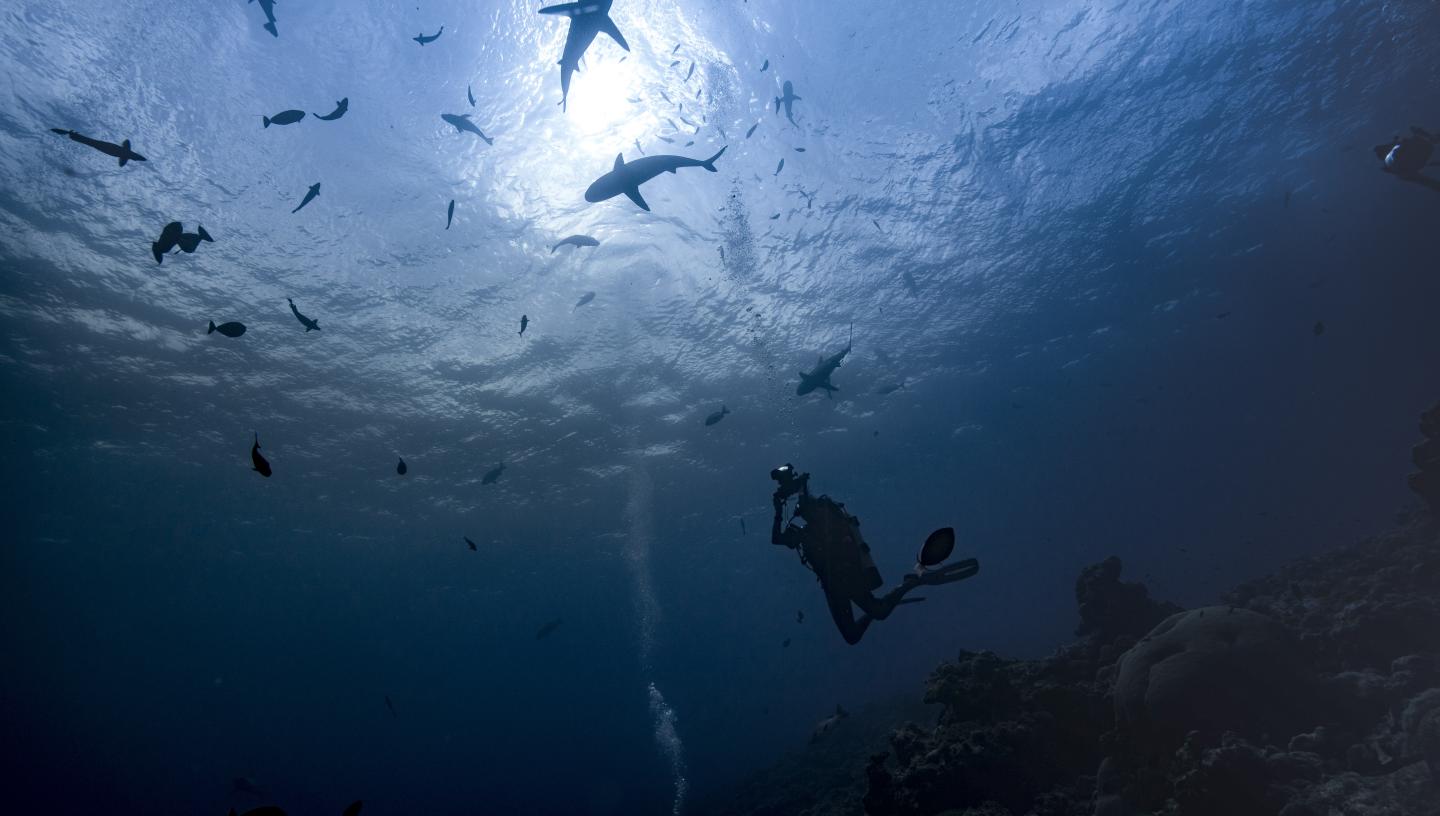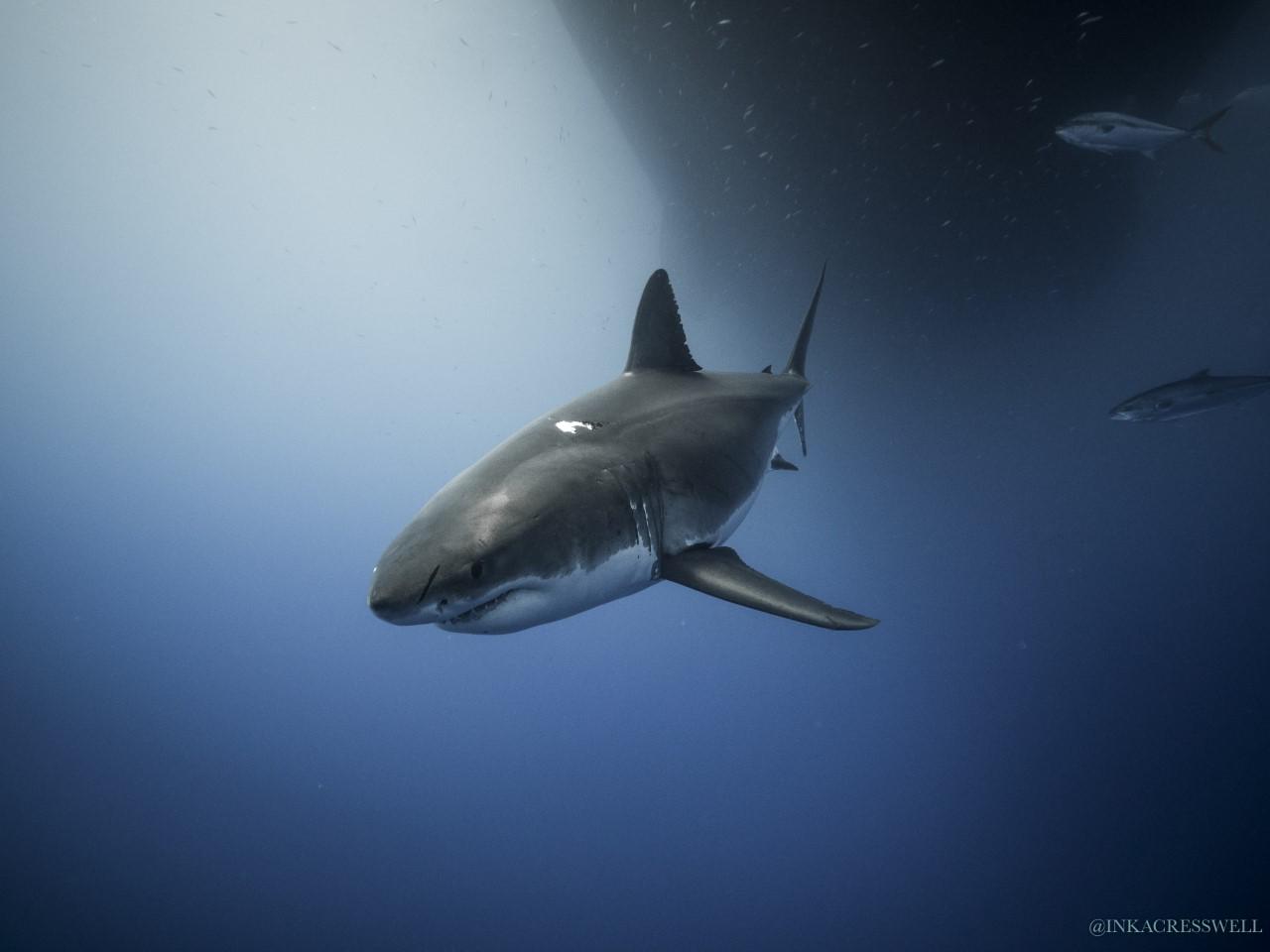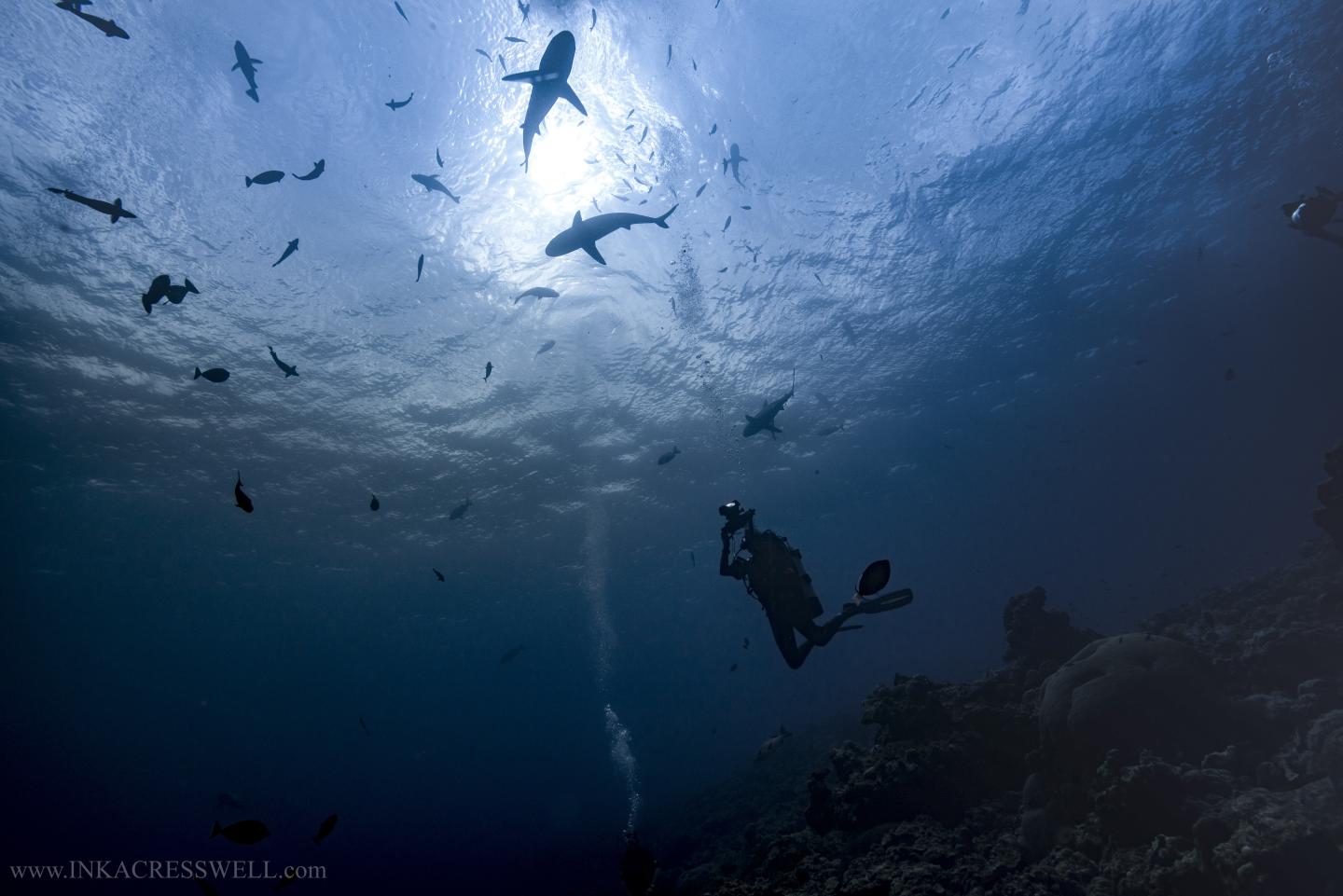Being underwater is where Inka Cresswell feels most at peace.
Her passion for the underwater world began at an early age, with a childhood spent combing local beaches for mermaid’s purses and accompanying her dad on dives with a disposable camera.
Fast forward to today and Inka works as a wildlife filmmaker and underwater camera operator, balancing a busy schedule of shoots for companies such as Netflix alongside ocean advocacy projects.
Her background in marine biology, coupled with an MA in Wildlife Filmmaking, gives her a unique perspective on the stories of our ocean – a skillset she is committed to use to bridge the gap between science and public awareness.
Here, she gives the lowdown on starting out in conservation filmmaking, the sounds of the ocean, and why she’s standing up for marine ecosystems.
Why does the underwater world capture your imagination?
My dad was a divemaster and he taught me how to dive when I was 11 years old.
When I’m out in the ocean, it’s the most liberating feeling – any sense of claustrophobia goes away.
I love listening to the sounds of the ocean. A lot of people think of it as being such a silent world, but there’s a whole range of noises. On a coral reef you can hear the grunting of fish and the clicking of shrimps – it’s a much more vocal place than you first imagine!
Some of my favourite memories include being engulfed by bottlenose dolphins in the Socorro Islands and observing great white sharks in Guadalupe Island – both located off the coast of Mexico.
When did your love of underwater photography begin?
Soon after I started diving, my dad gave me a disposable camera. I used to follow him around underwater and, over time, I developed my own skills.
Photography is a really good way to learn buoyancy as it teaches you to be still and calm in the water.
When you are diving, your lungs become like a balloon: when you breathe in, they fill up with air, which makes you rise to the surface. When you breathe out, that air leaves your lungs, and you sink. This can be a nightmare when trying to capture steady footage, so you must learn how to adjust your breathing and to stay perfectly still.
I’m currently shooting on the Panasonic S1H, which is a DSLR style camera that can shoot to Netflix quality. It has all the benefits of a big camera, but it can fit in a backpack. Attached to the camera is a 16-35mm lens, a versatile lens that is amazing for doing wide-angle photography. The entire system is housed in a vacuum-sealed housing with a big glass dome port, allowing the camera to work over 100m below the surface.
In 2019 you released your debut film, MY 25: The Ocean Between Us. How did you come up with the idea for the production?
The film was my final project for my Masters degree. In 2018, I began an MA in Wildlife Filmmaking at the University of the West of England, which was run in partnership with the BBC’s Natural History Unit.
I knew I wanted to do something authored. I didn’t have the budgets of a big film crew, didn’t have the ability to hire in a top camera operator and script writer. I had to do everything myself. I found myself thinking, “What story do I have to tell?”
Something I’m passionate about is encouraging people to become an advocate for their local coasts and the wider ocean. I do a lot of work with schools and university students on how they can bring ocean advocacy into their research, and I give public talks on ocean conservation.
We all have a relationship with the ocean, and that was what my film was about: I wanted to show my relationship with the ocean, and how much I’ve seen it change in just 25 years.

What did you find while making the film?
My journey started in Port Antonio on the north-eastern coast of Jamaica. I’m Jamaican-British and I love the area for a lot of personal reasons, but the coral reefs have been devastated by large-scale commercial fishing practices.
I wanted to highlight the incredible work of the Alligator Head Foundation, a grassroots organisation that is working with the local community and talent to restore the reef.
After a few years of work, the Alligator Head Foundation has seen fish biomass recover by 200%. The area is now a no-take zone, and the organisation work with the local fishermen to find alternative jobs for them, to ensure they still have a livelihood. Some of the fishermen have trained to become coral gardeners to restore the coral reefs.
Whereas Jamaica has changed so much, I also wanted to document the marine environments that are still thriving and existing, such as Palau, located in the western Pacific Ocean.
Palau is renowned for its incredible marine protected areas, and I was fortunate to dive there when I was younger. It’s one of the only diving locations I know that looks the same as it did 25 years ago.
There’s no need for new science in Palau, it’s a matter of respecting the Elders and understanding that the practice they have maintained for centuries has allowed the ecosystem to thrive.
There are different approaches to marine conservation around the world. While some places need new innovations to protect their coastlines, in other places it’s about indigenous knowledge and making sure you listen to the locals and the community – you can’t assume you know what they want. It’s important to find an approach that fits your local space.
How can wildlife films raise awareness of ocean conservation?
Being able to share scientific messaging is very important to me. Studying marine biology was my dream – I loved the ocean and learning more about it – but I didn’t like the scientific process of writing research papers that stayed within the academic community. I wanted to raise awareness of these issues in a way that would engage a general audience.
One of the biggest struggles in raising awareness of ocean issues is that you can’t easily see what’s beneath the water. We talk about plastic pollution, but if people look at their local beach and can’t see a single bit of plastic, there’s a huge disconnect between what we’re telling them and what they’re seeing, which makes it easy for them to turn a blind eye.
However, if you can get footage where you can show that tidal wave of plastic washing over a reef, if you can show a turtle that’s getting tangled up in a plastic bag or hooks hanging off sharks, people can’t deny the reality of what’s happening in our oceans.

You’re passionate about inspiring girls to become involved in ocean conservation and STEM industries. How important is it for women to see themselves represented in these areas?
Whether we’re talking about climate change or overfishing, ocean conservation is a global issue. In order to tackle these issues, we need everyone to have a seat at the table, from female scientists to photographers.
For example, my audience will be entirely different to a colleague who is a white man in his 60s. Can he have an incredible impact on his community and do amazing work for ocean conservation? Absolutely. Will he reach the same audience I will? And the answer to that is no.
This is why we need diverse voices. We need to have more diversity of thought to generate innovative solutions to protect our oceans.
You’re also working on a Netflix series. What does that involve?
I’m working on a big ocean series for Netflix, as part of my role as a researcher for Wild Space Productions, a wildlife TV and film production company based in Bristol.
I collaborate with scientists all around the world, reading scientific papers, writing storyboard and fact checking scripts. I also work as an underwater safety diver and direct underwater sequences in the field.
The diving that I’m doing is much harder than I've done before. We will be filming in deeper water, in more remote places with more technical equipment – we are challenging ourselves in every possible way. To prepare for this, I’m doing a lot of dives in quarries in the UK, places that are freezing cold with poor visibility.
Are you optimistic for the future of our oceans?
I have mixed views. I am constantly speaking to scientists who are downtrodden and destroyed about the state of our oceans, and it is terrifying.
But I think it’s essential we hold on to optimism. As soon as we give up, everybody gives up.
We need to understand and appreciate that the ocean of the future will not be the ocean of yesterday: we have to move towards something different. We don’t know what form this will take, but we must keep moving forwards and pushing for change.
In a sense, I am hopeful because there are so many technological advances taking place, and lots of passion – the younger generation is fighting so hard for our oceans and our planet.
In my film, I state that we are at a tipping point – our actions over the next ten years will define the future of our oceans. The story I hope to tell is of resilience, innovation and passion: how my generation rebuilt our oceans. It will be a challenge, but I’m up for it, and I think a lot of people are too.
As told to Elizabeth Oliver, Digital Content Producer at Royal Museums Greenwich

Making Waves
As told to Elizabeth Oliver, Digital Content Producer at Royal Museums Greenwich
All images © Inka Cresswell


